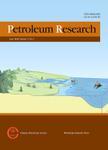Computational fluid dynamic(CFD)modelling of transient flow in the intermittent gas lift
作者机构:Petroleum and Natural Gas InstituteFaculty of Earth Science and EngineeringUniversity of Miskolc3515MiskolcHungary Department of Petroleum EngineeringCollege of EngineeringUniversity of BaghdadAljadrea10071BaghdadIraq
出 版 物:《Petroleum Research》 (石油研究(英文))
年 卷 期:2020年第5卷第2期
页 面:144-153页
核心收录:
学科分类:1002[医学-临床医学] 100214[医学-肿瘤学] 10[医学]
基 金:This study was carried out as part of the EFOP-3.6.1-16-2016-00011“Younger and Renewing University e Innovative Knowledge City e institutional development of the University of Miskolc aiming at intelligent specialisation”project implemented in the framework of the Szechenyi 2020 program The realization of this project is supported by the European Union co-financed by the European Social Fund
主 题:Intermittent gas lift Slug velocity Transient flow CFD Artificial lift
摘 要:A computational fluid dynamics model(CFD)is developed for intermittent gas lift *** simulation is conducted for a test section of 18 m vertical tube with 0.076 m in diameter using air as injection gas and oil as a formation *** results obtained from the CFD model are validated with the experiment results from the *** current study shows that computational modeling is a proven simulation program for predicting intermittent gas lift characteristics and the transient flow parameters that are changing with time and position in the coordinate *** model can predict the slug velocity behavior for different injection *** slug velocity profile shows three regions;the first region is the rapid acceleration at the initial time of injection,the second region shows the nearly constant velocity until the slug reaches the surface and the third region is again the rapid acceleration when the liquid starts to ***,the results obtained from this model show that as the gas injection pressure increases,the liquid slug velocity increase,and the region of the constant velocity *** effect of the injection time on the liquid production rate has been studied for two different gas injection pressures of 40 psig and 50 *** developed model shows that more than 50%of the liquid production is coming from after flow period.



